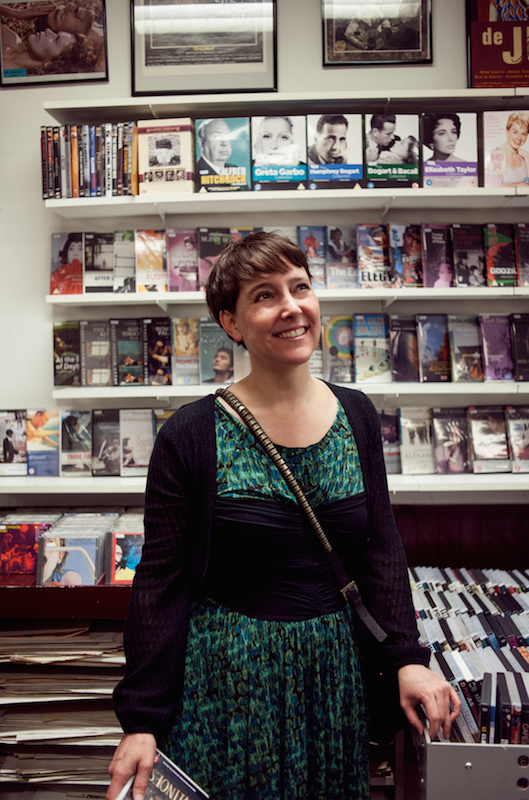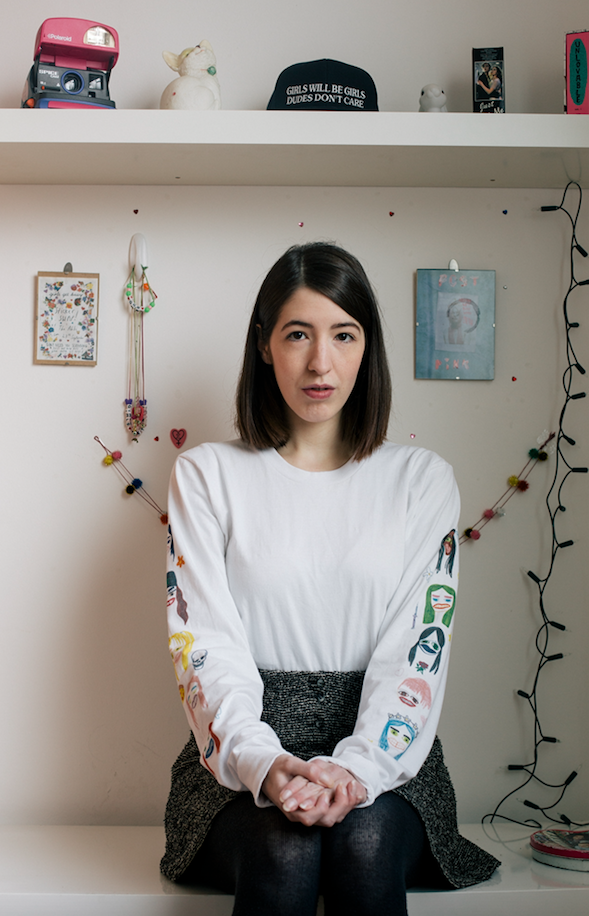New Feminists
Empowered by the possibilities presented by the internet, a wave of passionate young feminists are making strides towards a more equal society

It’s a common misconception that contemporary feminism has lost its relevance – one minute it needs to be rebranded, and the next it’s a Paris fashion week buzzword. But that’s changing. A new generation of feminists is finding its own voice online, using the wide range of social-media tools at its disposal. It’s Facebook groups, Tumblr and Wordpress blogs and Twitter feeds that we now regularly see being used to express opinions and outrage about political and social incidents, from Pussy Riot’s protest performance to the campaign to end Page Three in The Sun.
These outlets are being appropriated by millennials who are seeking greater reason and equality when it comes to gender. Our Protein Gender Survey, which asked people aged 16 to 30 about their views on gender issues, sheds light on how feminism has become a key part of these young people’s identities, men as well as women: 78% of female respondents identify themselves as feminists, while half of males say the same.
WhenTVnetworksandnewspapersfailtopickupontheissues that matter to this group, social media and other digital tools offer an alternative place for discussion. “There has been a rise in the visibility of feminist conversations because the way we make and consume media has changed,” explains Wagatwe Wanjuki, a feminist activist and journalist based in New York. “When people feel their stories are being ignored by the mainstream media they can create their own content and make a noise that forces the mainstream to take notice.”
Beyond being a great tool for self-expression, social media gives feminists an easy way to start a conversation that previously may have comprimised their own safety. “Social media has made it easier than ever to talk about an issue, bring up a conversation and question and challenge each other,” explains Julia Gray, co-founder of anti-harassment platform Hollaback London. “The fact that this conversation can happen from the safety of your own home has a real appeal.”
It’s also now easier to take part in a debate from a digital device. Helen Lewis, deputy editor of the New Statesman, embraced Twitter as a way of communicating directly with her followers about feminism, among other issues. “Social media and online forums have helped more women get involved in feminism because they no longer have to find a babysitter, drive for miles or give up a shift at work in order to attend a meeting,” she notes. “Online, the meeting is happening all the time.”
Jennifer Lyon Bell

Online feminists are not only revolutionising the platforms on which sexism can be discussed, they’re also grappling with gender issues created because of the internet. Mainstream pornography is ubiquitous, largely free and unfortunately peddles some pretty retrogressive depictions of female sexuality. But one woman determined to change all that is film-maker Jennifer Lyon Bell. Her erotic films, which depict clearly affectionate couples, feel more like short-film competition entries to international film festivals than traditional pornography; and, of course, they do away with the stereotype of a man dominating a woman.
“A lot of mainstream porn has become frozen,” explains Lyon Bell. “It can’t surprise people anymore because it’s become so rote; the positions are rote, the expressions are rote.Female viewers can end up feeling alienated by the misrepresentation of female arousal. I try to make the viewer feel like they understand the characters’ emotional states and why they’re interested specifically in each other.”
Unfortunately, finding a platform from which to present positive alternatives to standard porn isn’t as straightforward as setting up a Tumblr account. “Most of us have been kicked off a social networking site or video hosting site even when we were scrupulously following the rules,” says Lyon Bell. Hopefully this is a problem feminists interested in sexual representation can start to address in 2015; online pornography is an incredibly important factor in how comfortable women feel using the internet. While the mainstream media is guilty of fetishising rigid beauty ideals, so too is mainstream porn of misrepresenting women’s sexuality, to the extent that Lyon Bell’s films – full of accurate representations – have been championed by sexologists, and even deemed therapeutic.
There is a small community of people working on these alternatives. “Most of us collaborate frequently, sharetipsandmakemoviestogether,”explains
Lyon Bell, but the growing interest from mainstream pornography sites might soon change that. “Letters from my viewers are making me suspect there’s a
big chunk of porn-watchers who’d like an occasional alternative, especially if female sexuality is shown in a really appealing alternative way.”
Girls Get Busy

Beth Siveyer is the founder and editor of Girls Get Busy, a feminist platform that publishes the work of writers, artists and musicians. It started as a printed zine, but Siveyer quickly saw the potential of building an online presence, for a generation that has grown up in the digital age. Now in its fifth year, Girls Get Busy includes a Tumblr and many women now contact Siveyer online.
“I wanted to make a creative platform and support network for girls to showcase their work and ideas about feminism and to feel part of a community with a voice,” explains Siveyer. “I definitely feel that moving from print to digital has enabled the zine to reach out to many more people and I hope by making it available online for free it inspires readers to be creative or at least give them comfort that they are not alone,” she says.
Siveyer was driven to start the zine having been one of many women left disillusioned by the feminist voices she was expected to identify with. “Feminism often has to be compromised in the mainstream media and tends to pander to the straight male gaze,” she says. “There’s a very long way to go in terms of diverse representation.” The mainstream might be bleak, but with an increasing number of issues finding an audience through social media, she anticipates more serious discussion and awareness to come. As well as introducing new ideas about feminism into the mainstream, pockets of social media are increasingly drawing people into discussions about topics, such as gender neutrality, and away from judgmental voices. It’s important that creative platforms like Girls Get Busy are there to provide much-needed punctuation amidst the chaos of constant sharing.
Alongside the zine, Siveyer curates quotes, thoughts and images from across Tumblr on the front page of her website, constantly engaging with new audiences and sharing ideas. Aesthetically, Girls Get Busy has adapted zine culture for the internet age. It’s an update of the cut-and-paste photocopied zines, such as Bikini Kill, published in the early 1990s by its namesake riot-girl band, and Shocking Pink, a grassroots magazine created in the 1980s discussing issues around contraception, queer culture and women’s rights. Girls Get Busy is an example of how Tumblr is the natural home for modern-day versions of these zines – and proof that bedroom culture is more alive than ever.
Hysteria

Bjørk Grue Lidin is the editor-in-chief and publisher of Hysteria, a print and online magazine that champions a number of feminist voices from across the world. Its writers’ opinions are eons away from those of mainstream newspaper columnists like Caitlin Moran or activists such as Facebook’s chief operating officer Sheryl Sandberg. In fact, Hysteria’s aim is to question the dominant strand of feminist thinking that’s largely created by those living in liberal and Western capitalist countries – expect essays on disability, body politics and people trafficking, among other topics.
Despite this innate suspicion of the mainstream, Hysteria is far from elitist, and each issue is available free online. “We were never interested in producing an exclusive feminist publication available for the few,” explains Grue Lidin. “From day one, our goal was to engage everyone in the debates we lay out in our periodical.”
Grue Lidin welcomes the growing number of online communities taking on the status quo. However, she’s equally keen to point out holes in the digital revolution. “I’m not a big fan of the notion of a ‘fourth wave of feminism’, defined by activism on the internet,” she asserts. “A large number of feminists around the world don’t have access to the internet, or they choose to perform their feminism outside of the internet, and rightly so.”
After all, much of the internet’s structure mirrors that of a patriarchal society but, as problematic as it may be, the ability to interact with an audience as diverse as possible is clearly essential to Hysteria. Grue Lidin sees the free digital version as a solution to the high production costs that have somewhat restricted the advert-free print magazine’s global availability.“The internet is amazing because it allows us to reach people in different corners of the world,” says Grue Lidin. “Many of our contributors –from India for example–would never have heard about us if we didn’t have an online presence.”
The ability to distribute content freely and globally is vital to the team, especially as a number of its feminist accounts, essays and art are submitted from outside Europe. Hysteria’s decision to exist as a living, digital document means that the unheard voices of feminism it stands behind will find more ears than ever before.
Cuntry Living

Feminist zine Cuntry Living began life as a small cut-and-stick project put together by a group of Oxford University students, but after the founders set up a Facebook page it attracted 7,000 readers.
Members post thoughts, questions and stories, and co-founder Alys Hale sees it as a natural place for debate and support. “It’s an amazing way of bringing like-minded feminists together,” explains Hale. “With Facebook, it very easily bleeds out into the feeds of those who might not identify as feminists and will hopefully expose them to a more positive view on equality.” While the group is closed in order to allow members to feel safer, the admin will accept anyone who wishes to join. “We want to ensure it remains a group that can have a really positive effect on people.”
When it was launched, the zine’s intention was to explore new ideas about feminism. But with so many voices online – from the radical to the more mainstream – it can be hard to maintain a consistently positive message. “With such huge amounts of information available I sometimes worry that the message gets lost,” says Hale. “One of the most frustrating issues, and a catalyst for the birth of Cuntry Living, was inter-feminist aggression.”
Although frustrating, this apparently hostile behaviour feels typical of, and wholly necessary to, the new, highly self-conscious feminism emerging online. Comments like ‘check your privilege’ might seem accusatory, but it ensures that users consider their situation before laying into another person, building understanding and inclusion in the community over time.
It’s also a community that’s expanded beyond Facebook. “Tumblr is creating a feminist aesthetic that is recognisable and accessible,” explains Hale. “In the same way that each wave or movement had sartorial signifiers – from the suffragettes’ colours to the third wave’s juxtaposition of combat boots and babydolls – on Tumblr we now find art and self- portraits that challenge traditional standards of beauty.”
Together, the Facebook group, Tumblr and print zine create a user-driven mass distillation of contemporary culture and social issues that first and foremost reach millennials, although in the future Cuntry Living plans to utilise an even wider range of channels to engage with a much broader group of people. Wherever this route might take them, they assure us “the message will never change.”
Photography by Teska Overbeeke & Viv Vadoliya


